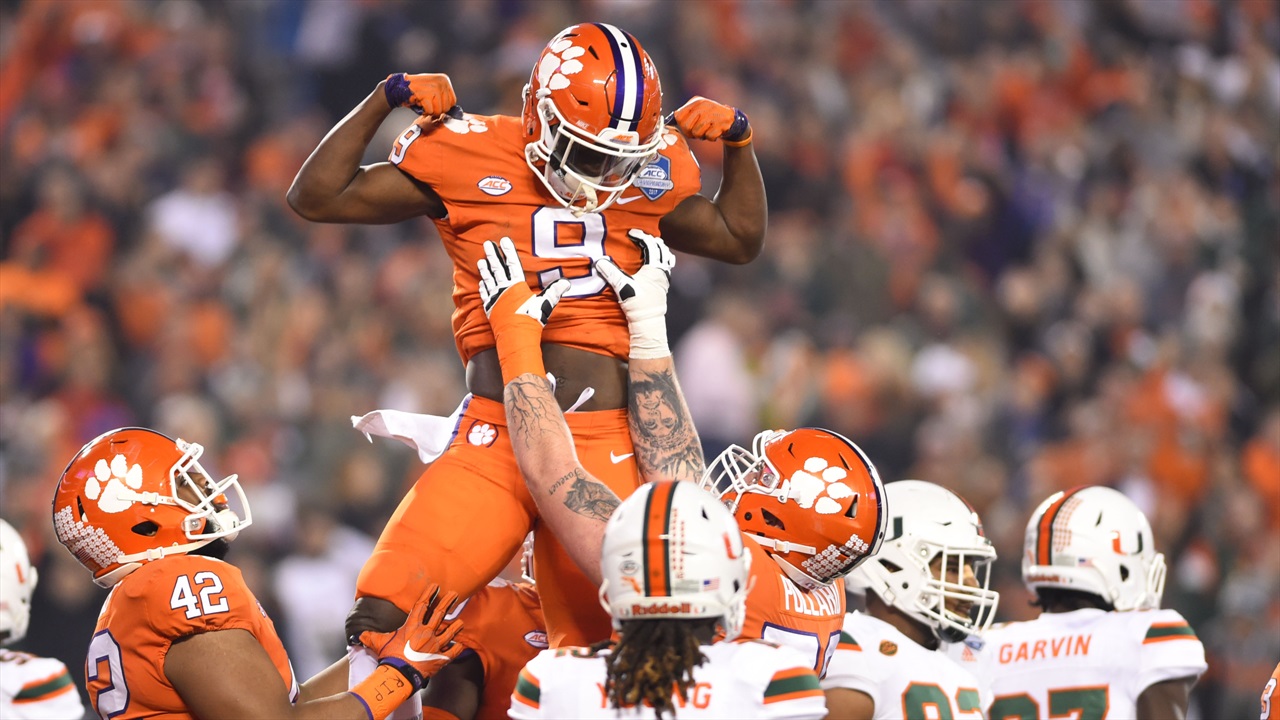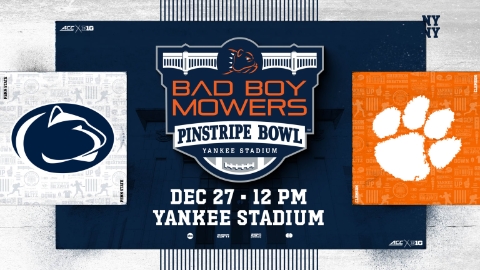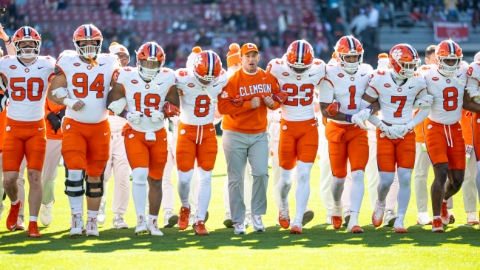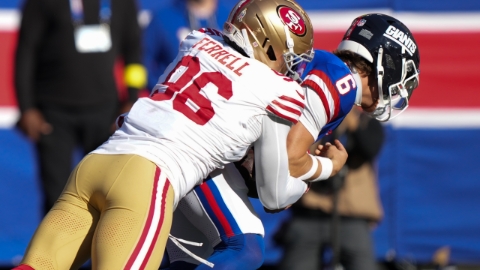
Travis Etienne secured the handoff from Zerrick Cooper and headed off tackle just like the play called for, but there was a problem. Just past the line of scrimmage, a scrum of 8 players were in a battle for space and it was turning into a stalemate.
Etienne could have continued on his path, likely for a nice gain, using his powerful lower body to bulldoze for 5 or 6 yards. After all, Clemson had a 19 point lead on the road at Louisville and first downs and clock churning were the immediate team goals.
Etienne had a different goal. He hadn’t played at all the week before against Auburn and this was an opportunity.
In the blink of an eye, he cut left, shrugged off an attempted arm tackle 2 yards downfield, bounced off a second tackle attempt 4 yards later and left the Cardinal defense in the dust, outrunning multiple defenders, more than one with seemingly advantageous angles, as he rocketed up the sideline. Eighty-one yards later Kirk Herbstreit was gushing about Clemson’s “embarrassment of riches”.
2017 was going to be Tavien Feaster’s breakout season. Feaster was scheduled to be next in line as a featured back and with Wayne Gallman moving on to the NFL this season was going to be the true beginning of the Feaster era.
Feaster had a few moments in 2016, but those were in garbage time while this season he would get his shot at the top spot.
Or would he?
Etienne burst onto the scene with four rushes of 50 or more yards while Feaster did the dirty work, softening up the defense with punishing runs up the middle early as Etienne watched from the sidelines.
Etienne electrified the Clemson faithful, but Feaster had been no slouch while building his own highlight reel which included a 47-yard touchdown vs. Kent State, a 60-yard touchdown reception at Virginia Tech and a 37-yard score against Syracuse.
Still, there was something about Etienne that fascinated the Clemson masses.
Before Feaster could claim the feature back role as his own, social media and message boards were alive with the great debate: Feaster or Etienne? Etienne or Feaster?
Nursing a 3 point lead in Carter-Finley Stadium with 5 seconds left in the 3rd quarter, Clemson found themselves in a bit of a pickle. A well-placed Wolfpack punt had the Tigers starting at their own 11-yard line. A mistake here could be deadly, not just for the game, but also for division, conference and national title hopes. Play it safe, grind out a first down, get some field position and go from there.
By the time Kelly Bryant took the snap and handed off to Feaster the Clemson offensive line was doing work. Not just the line, but C.J. Fuller, from his pre-snap position 2 yards behind the right tackle zipped through and chipped a linebacker just enough.
As the hole opened another linebacker appeared ready to fill the gap but left guard Taylor Hearn had pulled, crossed in front of Feaster and walled him off. Just like that Feaster exploded through the hole and raced 89 yards untouched into the end zone for a 10 point lead, shocking the NC State crowd and team. It was an electrifying, momentum stealing, long and beautiful touchdown run - just what Clemson fans expected when Feaster signed with the Tigers.
Yet, the fans still clamored for more Etienne.
From a distance and without context, it’s easy to wonder why Etienne doesn’t get more carries. Etienne’s yards per carry is higher (7.2 to 6.4), he has more explosive rushes (14 to 9) and more touchdowns (13 to 7) all on the same number of carries. Pretty simple, right?
We often hear about Clemson’s depth, typically during any discussion of the lines. Less often do we hear about how the rotation of Feaster and Etienne may be the most important rotation for the Tigers.
Both players ended the ACC Championship game with 103 carries for the season, but got there in very different ways - Feaster dominating the carries in the first half, followed by an almost equal number between the two rushers in the 3rd quarter and finally Etienne more than doubling Feaster’s fourth-quarter carries. Thunder giving way to Lightning as the defense tires, if you will.
Feaster has pounded away in the first (30 carries for 151 yards) and second (26 carries for 119 yards) quarters while 73% Etienne’s yards gained have come in the second half, including 344 yards on 33 carries (10.4 average) in the 4th quarter. Oh, by the way, all 4 of Etienne’s 50+ yard gains have come in the final period.
On the flip side, Feaster has only 15 carries and 56 yards in the fourth quarter on the season.
Would Etienne maintain the same level of effectiveness with more carries, particularly in the first half? It’s impossible to know for sure, but there’s evidence of potential diminishing returns in Etienne’s carries, both mathematically (standard deviation of yards per carry is larger than that of Feaster’s carries) and optically (four 50+ yard rushes in his first 50 carries, zero in his last 53).
It’s human nature to want more of a good thing, and if a running back is averaging 7.2 yards per carry fans are going to want more. But more could be less in this case.
The deviation in Etienne’s yards per rush could expose the offense to additional risk of failure early in games, maybe changing the course of the game. Of course, it could lead to a house call, too, altering the game in a different way.
The coaches walk a line between the explosiveness of Etienne and the dependability of Feaster, opting to use Feaster early and Etienne later. As the numbers show, it’s a strategy that’s been working.
Come New Year’s Day the Tigers will undoubtedly have to run the ball, at least to some degree, against Alabama. They’ll likely start with Feaster, as they have all season, followed by Etienne. Whether or not they’re successful is one of the biggest storylines of the College Football Playoff and will likely determine the winner of Clemson-Alabama III.




